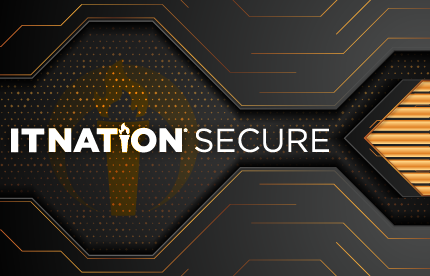Knowing that there is money to be made beyond office tech equipment, some leasing companies offer managed IT as part of their leasing packages. But be forewarned: Not all leasing firms offer or bundle managed IT with equipment leases. Some are just glorified bankers while others know how IT-intensive printing and the office technology industries are becoming.
To find out more, we connected with Mitch Leahy, vice president and general manager of the Office Equipment Group at leasing firm GreatAmerica Financial Services, for some insights into the managed IT part of leasing. As a dealer, it’s worth contacting your favorite leasing firm to see what they have to say. In some cases, a dealer can work with a leasing firm to offer a managed IT solution that covers multiple types of customers and can be customized to meet different needs. Leahy told me, “We have evolved our leasing services to support office technology dealers by offering managed IT in addition to traditional imaging devices.” This integrates financing of equipment and managed IT into a single transaction.
Know Your Customers
There is no one-size-fits-all approach to managed IT for office tech dealers because customer needs vary so greatly. For instance, while virtually all organizations want solid data security, your local town or city probably has significantly different requirements than a financial services business, and what’s right for them can be dramatically different than a law firm or a medical practice. A leasing company with managed IT offerings may have the knowledge to suggest services based on the type of customer. You can then include that knowledge into conversations with customers. Like this: “Law firms often need a high level of security. They might want to consider (fill in the blank)” or “Medical practices do a lot of scanning and faxing. There are some steps you can take to make those documents more secure.” Such suggestions show that you and the leasing company are partnering with customers to provide the best possible solution. This kind of thinking carries over to conversations you as a dealer have with customers.
A consultative approach usually works best, explained Leahy. “Starting with the dealer we ask questions like, ‘What are you trying to achieve with managed IT services? Is your main goal recurring revenue or services? Are you trying to onboard customers with certain types of businesses? Are you focusing on project work?’ This helps us start crafting solutions that makes sense for a dealer.”
Then it’s your turn. Whether your dealership is large, moderate, or small, it makes sense to know as much as possible about your customers and their needs. If you don’t already, learn about a client’s needs, their concerns, objectives, and their strong and weak points. You need to ask some probing questions about what they print, what kinds of customers, users, or employees they may have, how information and documents are stored, shared, and more. Such knowledge may even lead to offering a better mix of equipment or guiding them through leasing options that may include managed IT or managed print services (MPS).
A major reason behind the quest for details is because IT is part of every document. Helping customers manage their data is critical. You can add value to your dealership and the customer relationship by providing the managed IT services through an understanding of their needs. Developing the right solution in this way helps your company look smarter and more attentive, which can help seal a deal. Along the way it become part of your success.
In short, this can ultimately provide one-stop-shopping for office tech and managed IT. Bundling services and equipment together can also be a significant advantage for dealers because it simplifies monthly billing to customers. This can add IT equipment and services as needed while still providing a single invoice for a customer, positioning a dealer as a complete technology provider.
Software provider ConnectWise echoes the need for understanding your clients. Talking with clients goes beyond knowing the type of business they are in and can delve into your relationship with them. The path to selling managed IT includes:
- Building rapport to improve communication between you and your client.
- Helping clients understand that any solution is less about technology and more about value. They want to know about benefits and savings in this context, so show them why they should choose your product.
- Customize solutions to serve specific needs. This may mean varying offerings based on clients’ requirements and it’s why you need to be more than casually familiar with clients.
- Use reviews and testimonials from clients to establish credibility.
- Always have someone available to answer questions and address any doubts during sales and installation. Being available online or via email is not enough.
- Proactively reach out to ask if you can clarify any concerns or issues. They may say no but will remember that you made the effort.
Beyond the Leasing Firm
Because not all leasing companies offer managed IT solutions, what if this is a service you want to offer but need a firm with IT expertise to do the heavy lifting? Awaiting your call are a variety of firms with managed IT solutions you can re-sell to customers: Google it. You can then bundle their fee into the monthly bills you send customers. This makes understanding each client’s unique needs absolutely critical because you will need to explain those needs to the managed IT provider you choose, just as you would if you were working with an equipment leasing company. As noted above, you learn by finding out exactly what prospective managed IT clients need.
Beyond Managed IT
Modern Office Methods, a large dealer in Ohio, offers managed IT services that are integrated with its MPS. The combination can result in streamlined workflows, enhanced security, and better support. In some cases, this can be done in conjunction with OEMs (so check with yours).
Furthermore, AI and the Internet of Things (IoT) are becoming standard in leased equipment and even internet searches. Both are parts of MPS and managed IT.
“Successfully implementing a managed IT services business has nuances that are different than a traditional imaging business,” Leahy said. Whether you include Managed IT as part of a lease or a separate line in your bill to a customer, it’s part of creating solutions that match your go-to-market strategy.





